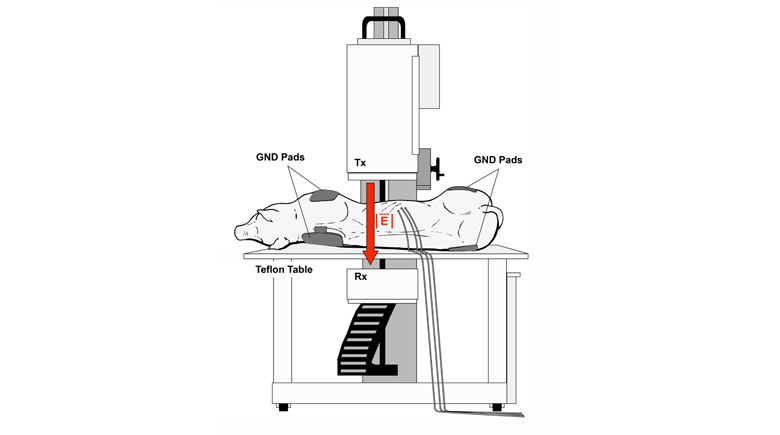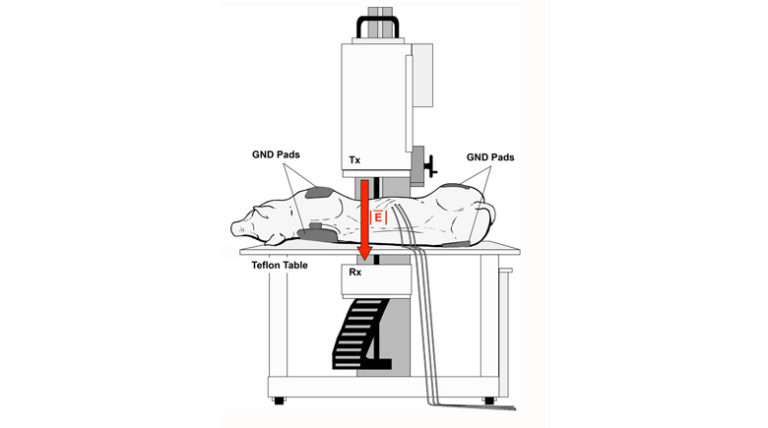
The Kanzius non-invasive radiofrequency hyperthermia system (KNiRFH) has been investigated as a treatment option for hepatic hyperthermia cancer therapy. The treatment involves exposing the patient to an external high-power RF (13.56 MHz) electric field whereby the propagating waves penetrate deep into the tumor causing targeted heating based on differential tissue dielectric properties. However, a comprehensive examination of the Kanzius system alongside any associated toxicities and its ability to induce hepatic hyperthermia in larger animal models such as swine are the subjects of the work herein. Ten Yucatan female mini-swine were treated with the KNiRFH system. Two of the pigs were treated a total of seventeen times over a 5-week period to evaluate short- and long-term KNiRFH-associated toxicities. The remaining eight pigs were subjected to single exposure sessions to evaluate heating efficacy in liver tissue. Our goal was to achieve a liver target temperature of 43 °C and to evaluate toxicities and burns post-treatment. Potential toxicities were evaluated by contrast-enhanced MRI of the upper abdomen and blood work including complete metabolic panel, complete blood count, and liver enzymes. The permittivities of subcutaneous fat and liver were also measured, which were used to calculate tissue specific absorption rates (SAR). Our results indicate negligible KNiRFH-associated toxicities, however, due to fat overheating, liver tissue temperature did not exceed 38.5°C. This experimental limitation was corroborated by tissue permittivity and SAR calculations of subcutaneous fat and liver. Significant steps must be taken to either reduce subcutaneous fat heating or increase localized heating, potentially through the use of KNiRFH-active nanomaterials such as gold nanoparticles or single-walled carbon nanotubes, which have previously shown promising results in murine cancer models.

